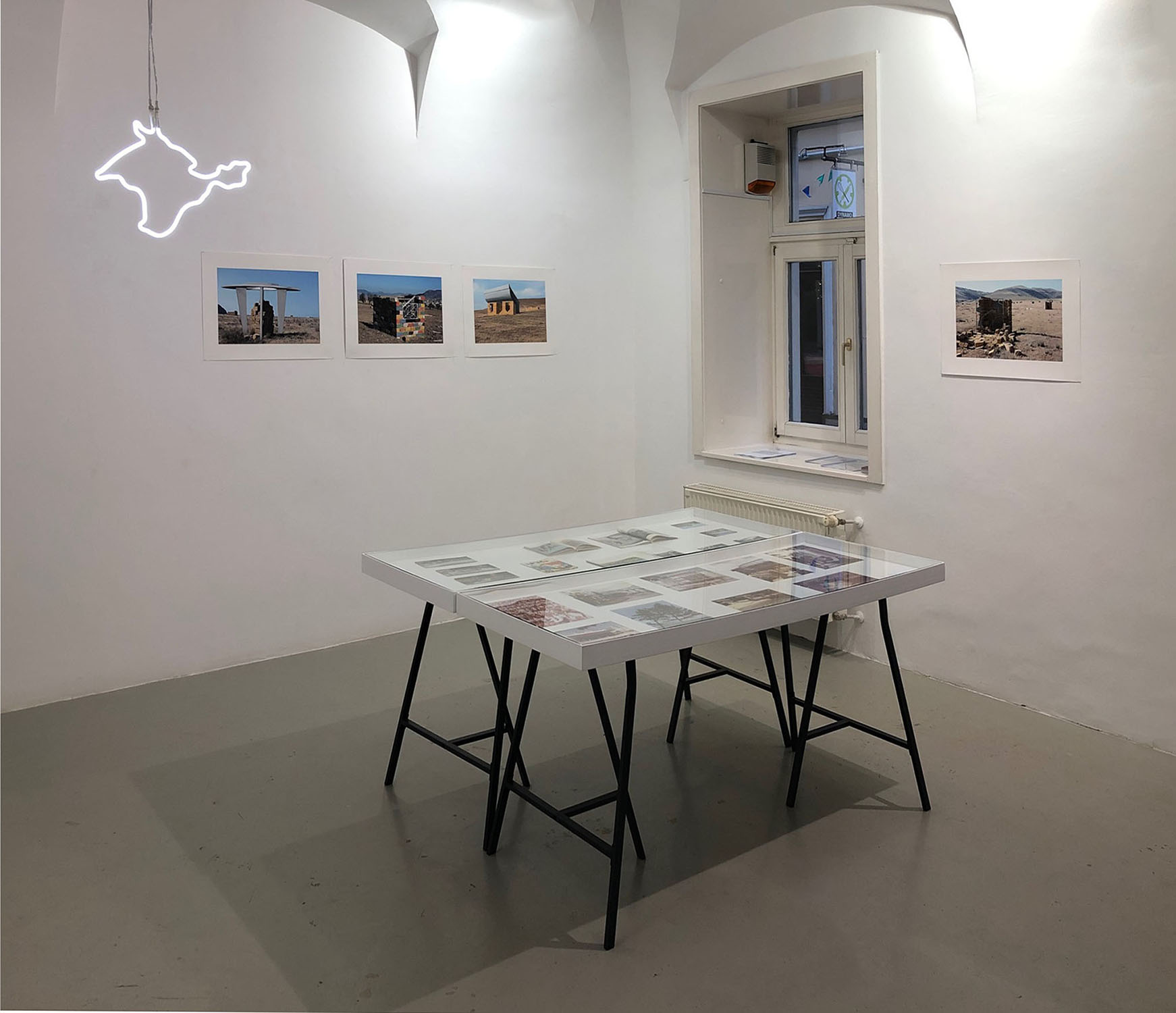Text & Publications - Nikita Kadan
2024
Nikita Kadan: The Siren’s Song
A project against the loss of cultural memory
Jan Van Woensel, April 2024
Archeological excavations that were launched in the mid-19th century in the region of Pantikapaion made the ancient Greek colony recognized as a site of great historical treasures. Today, Pantikapaion is known as Kerch. It is the most eastern city on the Crimean Peninsula – the Ukrainian province that was illegally annexed by the Russian Federation in 2014. Since then, museums in the occupied territory that preserved cultural heritage have been systematically plundered and destroyed.
Often working on the intersection of identity, history and activism, the artist Nikita Kadan (°1982, Kyiv, UA) recalled a book from his parents’ library, titled Antique Art: Works of World Art in the Museums of Ukraine (1977). The comprehensive trilingual catalogue lists an array of primitive treasures and includes the chapter Greek Cities on the Northern Coast of the Black Sea that frequently mentions Kerch in the context of its wider region. Kadan’s reunion with the book inspired him to call attention to Russia’s war crimes of looting art and cultural property and ravaging museums and sites of historic significance. Antique Art can be read quite literally as an inventory of stolen art. The book’s register of items details the location, mostly museums in southern Ukraine, where they have been taken from.
In part, Kadan designed The Siren’s Song based on the ancient Greek mythological creature. The archetypal image of the Siren, a hybrid between a woman and a bird adorned with feathers and scaly feet, is often found in sculptures and frescos as well as on funerary monuments, book covers and pendants that were discovered by archeologists in the regions of Kyiv and Kherson, among others. Over the years, Sirens received multiple interpretations ranging from now-disremembered folklore approaches in which they were believed to be a sign of world harmony and a foreteller of future bliss, to the somehow popular version that warns of the dangerous temptations embodied by women. She has been written about as a treacherous creature who lures sailors to shipwreck. The account of the 16th century Flemish philosopher and Catholic priest Cornelius a Lapide describes her as follows: “With her voice she enchants and with her beauty she deprives of reason – voice and sight alike deal destruction and death”. Dubbed the Muse of the Lower World it is commonly agreed that she sings. The end of the Siren’s song is death.
In his solo exhibition organized by Transit Gallery, Nikita Kadan juxtaposes the Siren with ancient Greek treasures that depict her image, examples of which were looted by the Russians in the occupied territory, and with air raid alarms; the sirens that tirelessly wail throughout Ukraine since the onset of the full-scale invasion in February 2022. The exhibition The Siren’s Song displays paintings based on images of stolen or destroyed works of art (from the book Antique Art), including portraits of the mythological creature, and one that depicts the modern ruin of a destroyed building in Borodyanka.
As a matter of fact, the theme of the siren is not a novelty in the work of Kadan. During a 2023 residency at the commemorative war museum In Flanders Fields, the artist created a monumental ship-like artwork comprised of a translucent installation and a sound piece. The work titled Tryvoha (The Sirens and the Mast) went on display in churches in the Belgian cities of Ypres and Mechelen. The audio component in Tryvoha, a Ukrainian word for anxiety, and alarm, features a recording of mezzo-soprano Lena Bielkina and violinist Ihor Zavhorodnyi who vocally and instrumentally mimic the eerie, ambient sound of the air raid alarm. The opera singer’s dynamic voice combined with the weeping vibrations of the violin is intimidating. Here, the siren’s acoustic warning of an impending airstrike and the foreboding call of the mythological death-spirit of the Siren are symbolically superimposed. The mast in Tryvoha is empty.
It is striking how Kadan persistently and effectively transports (and thus purposefully dislocates) physical and immaterial elements from the events of the ongoing war in Ukraine to exhibition venues in Europe as a way of confrontation. Through the well-studied example of Russia’s kleptomaniac tendencies that he introduces in The Siren’s Song, the artist essentially stresses the wider scope of the emergency. This emergency can be described best in plain language: Russia’s invasion aims to erase Ukrainian cultural identity. Russia seeks not merely to capture Ukrainian territory but to achieve the gradual destruction of Ukraine’s cultural life. Their “assault on Ukrainian cultural identity can be seen in everything from the widespread looting of national treasures to the targeted destruction of historic sites including museums, theaters, libraries and monuments. These attacks are evidence of an intentional long-term campaign to eradicate Ukraine’s distinct culture and heritage” writes Martha Holder for the Atlantic Council. Artists resist by embracing their culture, history and language against the influences of Russification. In this context, reverence should be given to the acts of resistance carried out by the award-winning novelist and poet Victoria Amelina. Following the invasion of Ukraine, she embarked on a mission to preserve the works of artists and writers who were killed or exiled during Russia’s war; a project against the loss of cultural memory. The day before Volodymyr Vakulenko was murdered – the poet who compiled a journal recording Russian atrocities – he buried his book under a cherry tree in his garden. It was discovered by Amelina and published posthumously. In the foreword she writes: “I’m inside a new Executed Renaissance. As in the 1930s, Ukrainian artists are killed, their manuscripts disappear and their memory is erased”. In 2023, Victoria Amelina died from injuries sustained during a Russian rocket attack on the city of Kramatorsk, on 1 July, the birthday of Volodymyr Vakulenko. If they succumb to the Siren’s song, the artists we support today will be memorialized tomorrow.
Nikita Kadan’s proficient work methodology that bridges elements of myth, history and actuality, introduces us to conceptual loopholes that facilitate the formulation of intertextual narratives that are simultaneously valid and cross-referential. For example: In essence, the leading motifs that the artist combines in his Transit Gallery exhibition as well as in Tryvoha, the Siren and the siren, meet each other in the common space of imminent danger. This is their logical relation. We understand that the former refers to a creature that sings, seduces men into death and belongs to the domain of mythology, and the latter to a civil defense system that warns residents for airstrikes in real life. However, as it appears in the exhibition, their consolidation stimulates the motifs’ relational integration. In that process they grow into an interconnected system of a kind of allegorical post-theory: The air-raid alarm metaphorically sings the Siren’s song. This approach simultaneously augments and destabilizes the logical relation of the Siren and the siren inside their common space of imminent danger.
Kadan intentionally uses destabilization as a mechanism. He has the exceptional talent of subverting commonly accepted truths while keeping their origin and discourse focused within their own theater of discussion, causing existential ruptures. Applied to The Siren’s Song, figuratively speaking through the loophole of such a breach, we could reverse the generally understood circumstances of the war and weaponize Nikita Kadan’s resurrection of the Siren, by proclaiming: Each interruption of life in Ukraine that is announced by the wailing sound of the sirens foreshadows the inevitable downfall of the Russian Federation. The Siren’s song is not delivered to the people of Ukraine.
By means of provocation, the passage above attempts to illustrate also how the general public’s assumed circumstance of stagnation of cultural life in Ukraine is misinformed. Artists like Nikita Kadan and his contemporaries are writing a unique art history in real time. Their movement transforms the vulnerability of life in a war-enduring country and its disturbing byproducts, into a force of resistance; an energy that is part of their reality. In Ukraine, leading art and cultural institutions persevere. They nurture cross-cultural dialogue via microprojects that challenge the convenience of polarization. They utilize their institutional influence to address social and cultural change in a time in which Ukrainian culture is threatened to such a degree that if Russia could have its way, it would be erased. The public should pay attention to the work of regional art centers; those that despite missiles raining down on them develop projects that are evidence of resilience no matter how small-scale and literally underground they may be. People should notice the independent art collectives that contribute to recovery, rebuilding and humanitarian aid, and – most importantly – the Ukrainian artists who are temporarily unable to create anything. The sirens wail also for us.
With thanks to Julia Beliaeva (Kyiv, UA) and Galerie Transit (Mechelen, BE).
Christine Vuegen in Collect, April 2024
Ward Bosmans in Gazet van Antwerpen, 3 April 2024
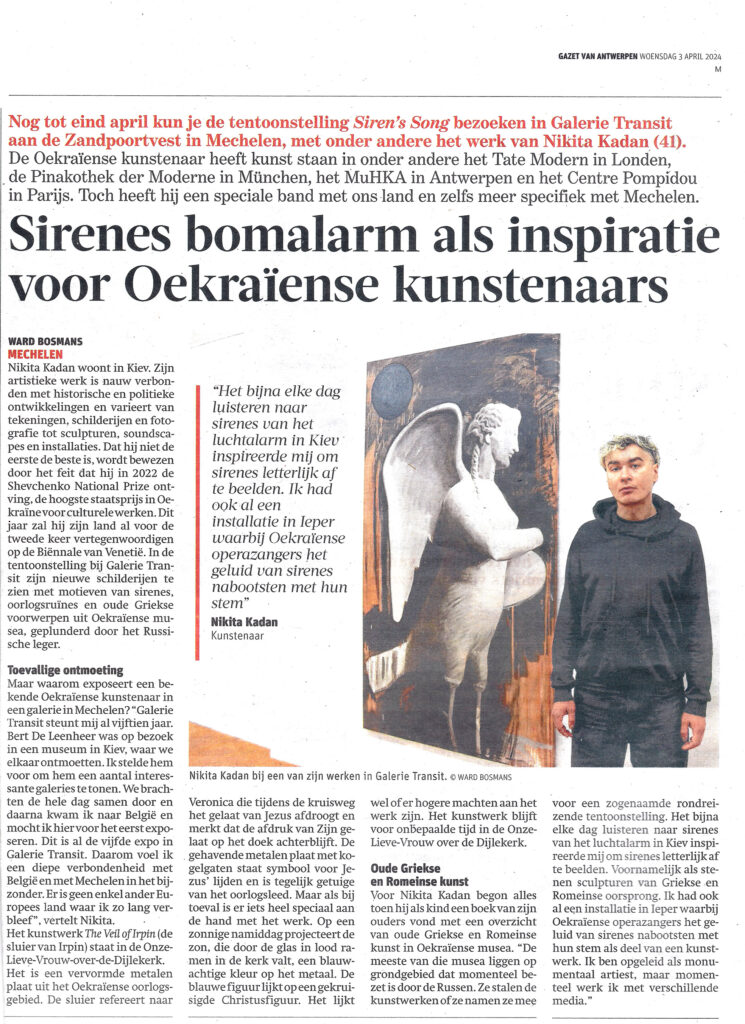
2023 Poetics of Witnessing * Poetics of Evidence | Nikita Kadan
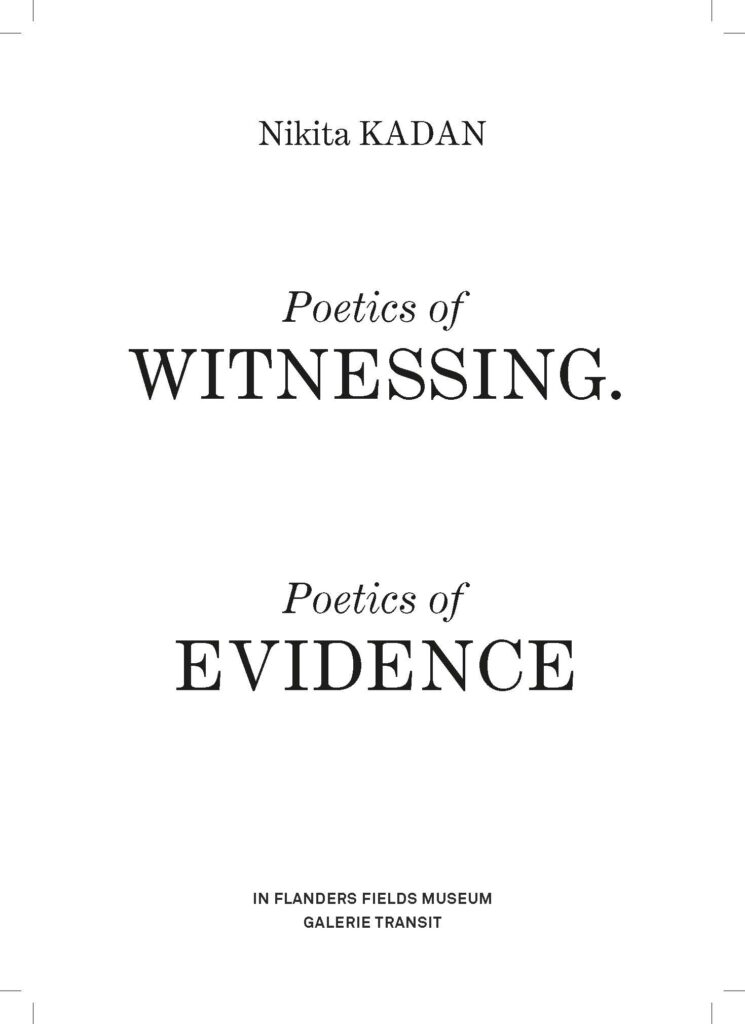
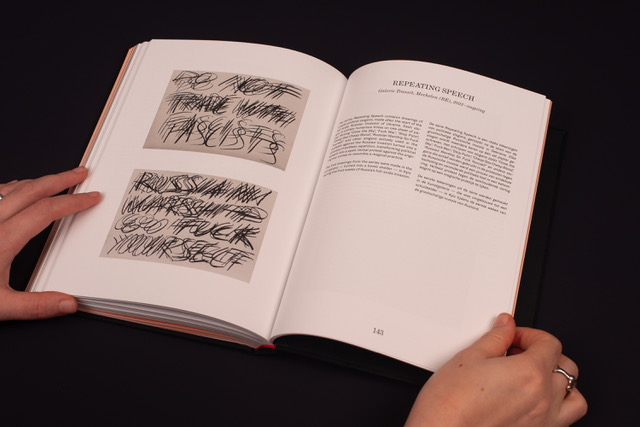
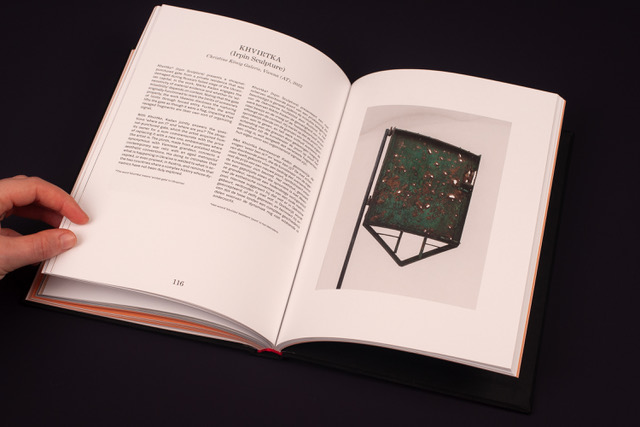
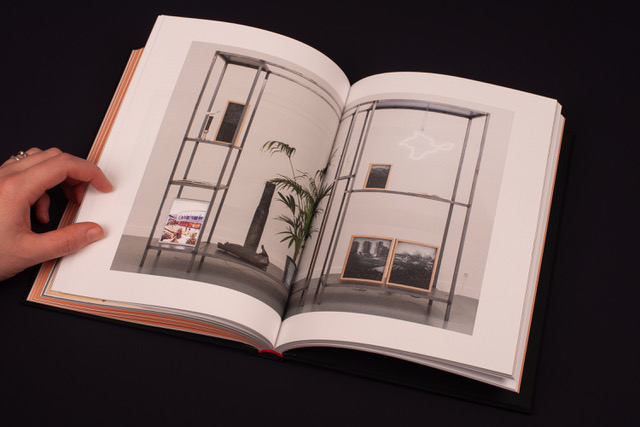
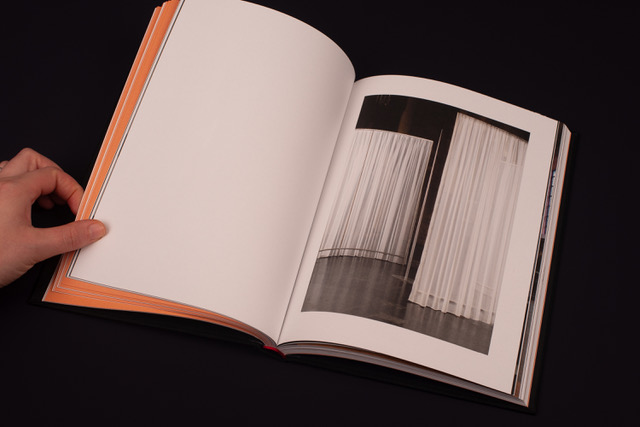
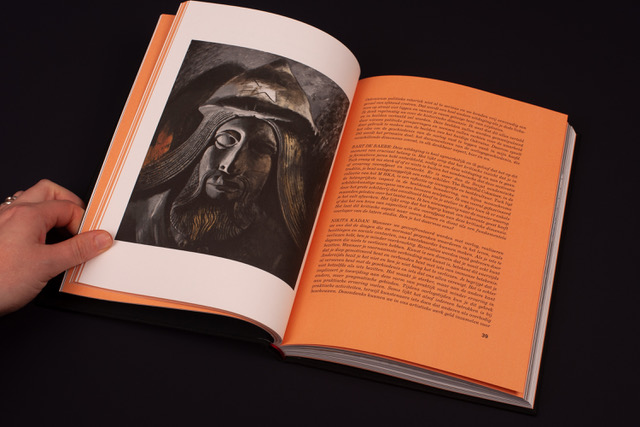
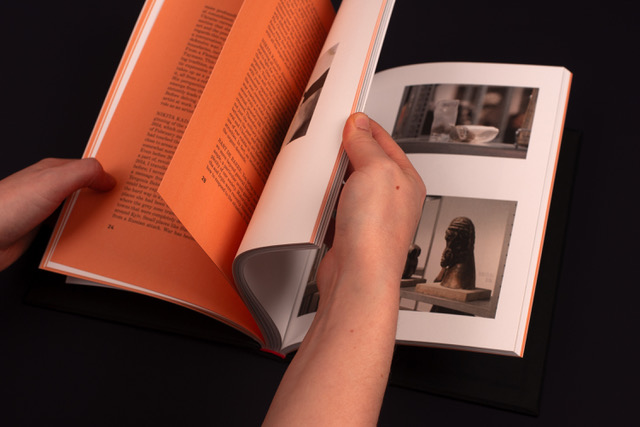
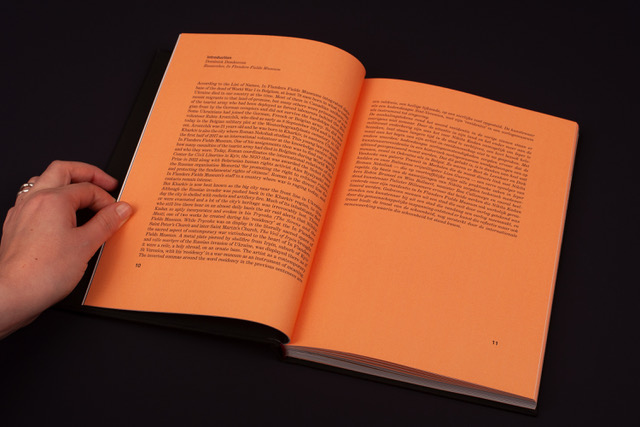
Hardcover linnen
Format: 170 x 240 mm, 160 pages
Authors: Bart De Baere, Dominiek Dendooven, Dana Kavelina, Nikita Kadan
Printer: Graphius, Ghent
Typeface: Century Expanded LT, Akkurat
Paper: Munken Lynx
Edition of 1200 copies
Legal Depot: D/2023/6486/4
ISBN: 9789464782929
Editor: In Flanders Field Museum & Galerie Transit
Price: € 29
2020 The Beautiful Colonizer in galerie Transit, 09.02 – 15.03.2020
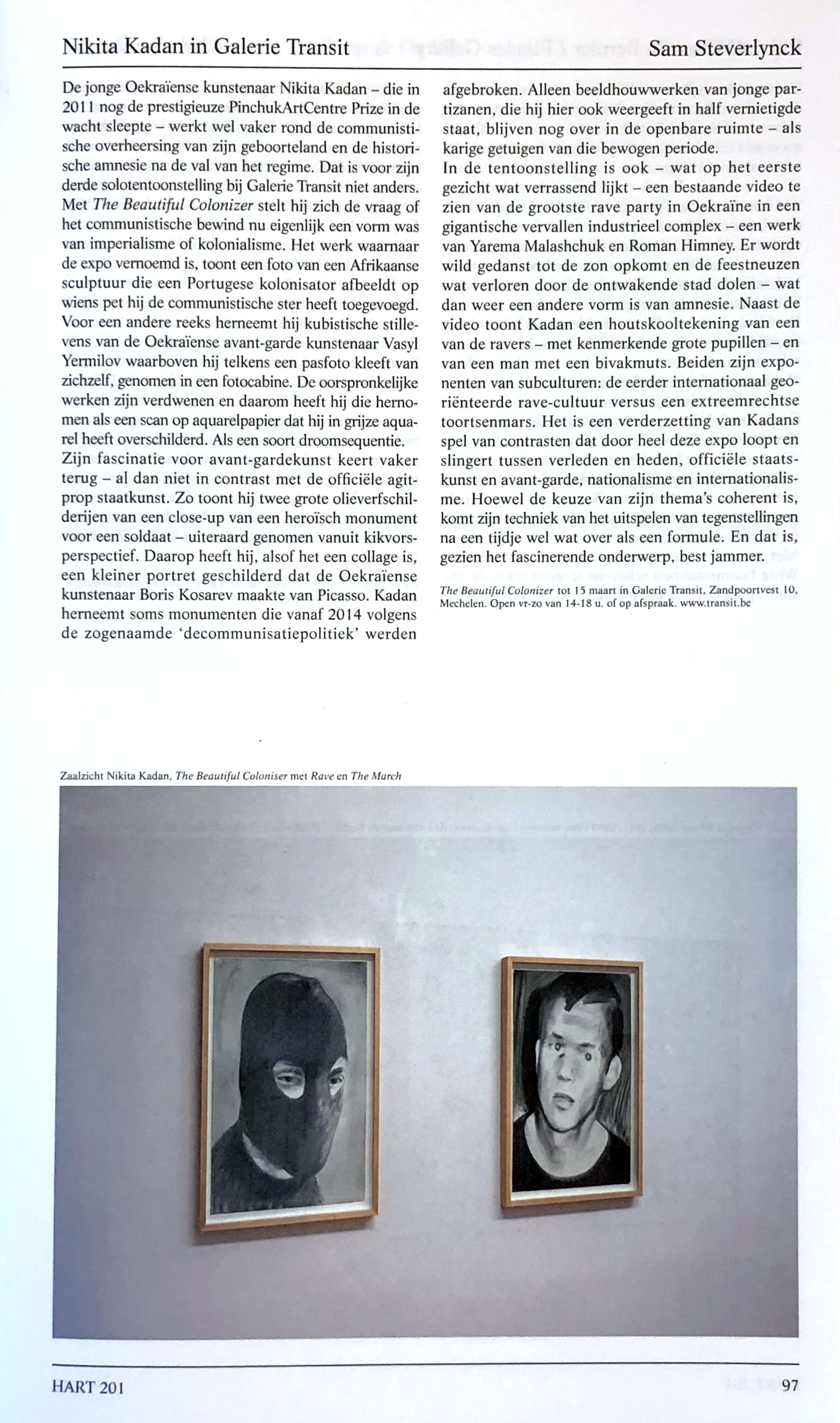
2019 Kisterem gallery in Budapest, 17.09 – 18.10.2019: OTHER ECHOES INHABIT THE GARDEN
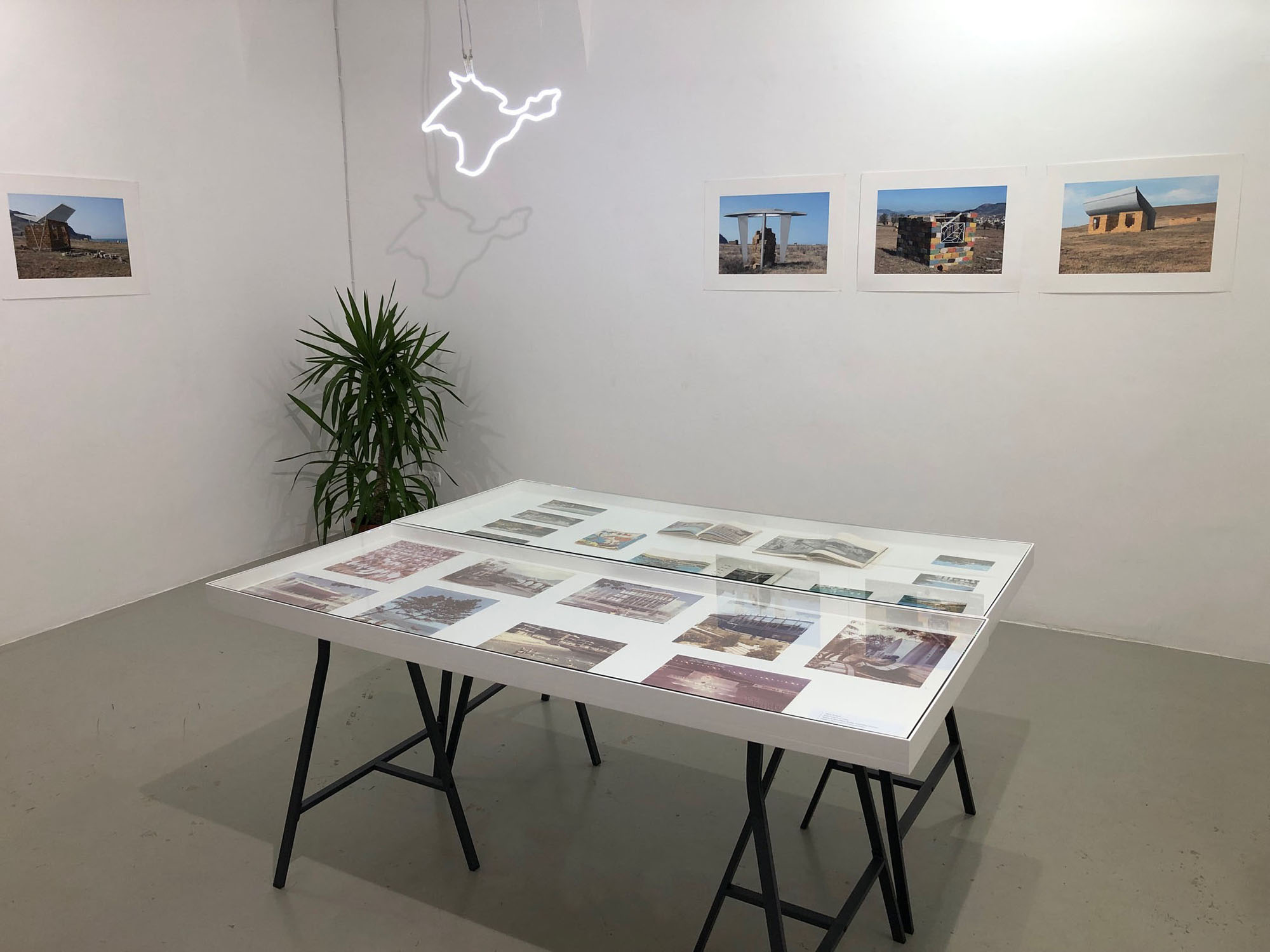
The antecedent of the exhibition is the screening series titled Fragments of Utopias, which was organized at the SYAA. By presenting several videos and documentary films, the screening series examined the failure of utopist beliefs in the development of society and science through architectural sites and ruins. The exhibition at Kisterem Gallery further deals with the relationship between architectural space and the human body and asks the question of why we are constantly turning towards the past so desperately when we want to achieve change. The works shown in the exhibition bring into daylight stories of underrepresented communities and ask questions about our future while turning towards the past. At the same time, they create new languages to talk about architectural space and the bodies trying to find their way in it. The term retro-utopia – according to Boris Buden – refers to the act of turning towards the future while making a detour across the past, examining its lost visions. However, the works exhibited here rather represent a certain kind of dilemma towards the fact that the belief in change has faded from the emancipatory and visionary utopias of the past and ask the question how we could within this new framework rethink the foundations of community and coexistence.
The works thematize such questions as what the relationship is between certain kinds of architectural spaces and the usage of those spaces by marginalized groups. How could a building which lost its function be reborn? How could certain spaces exclude and include communities at the same time? What are those bodily practices which are related to a certain kind of place? Through the stories of groups who are looking for their place within the context of the city, the works of Nikita Kadan, Tamás Kaszás and Anna Witt focus on topics of an aging society, climate change, and migration.
(The title is a quote from the poem Four Quartets by T.S. Eliot.)
2019 Mumok Vienna: Project of the Ruins, June 27 to October 6, 2019
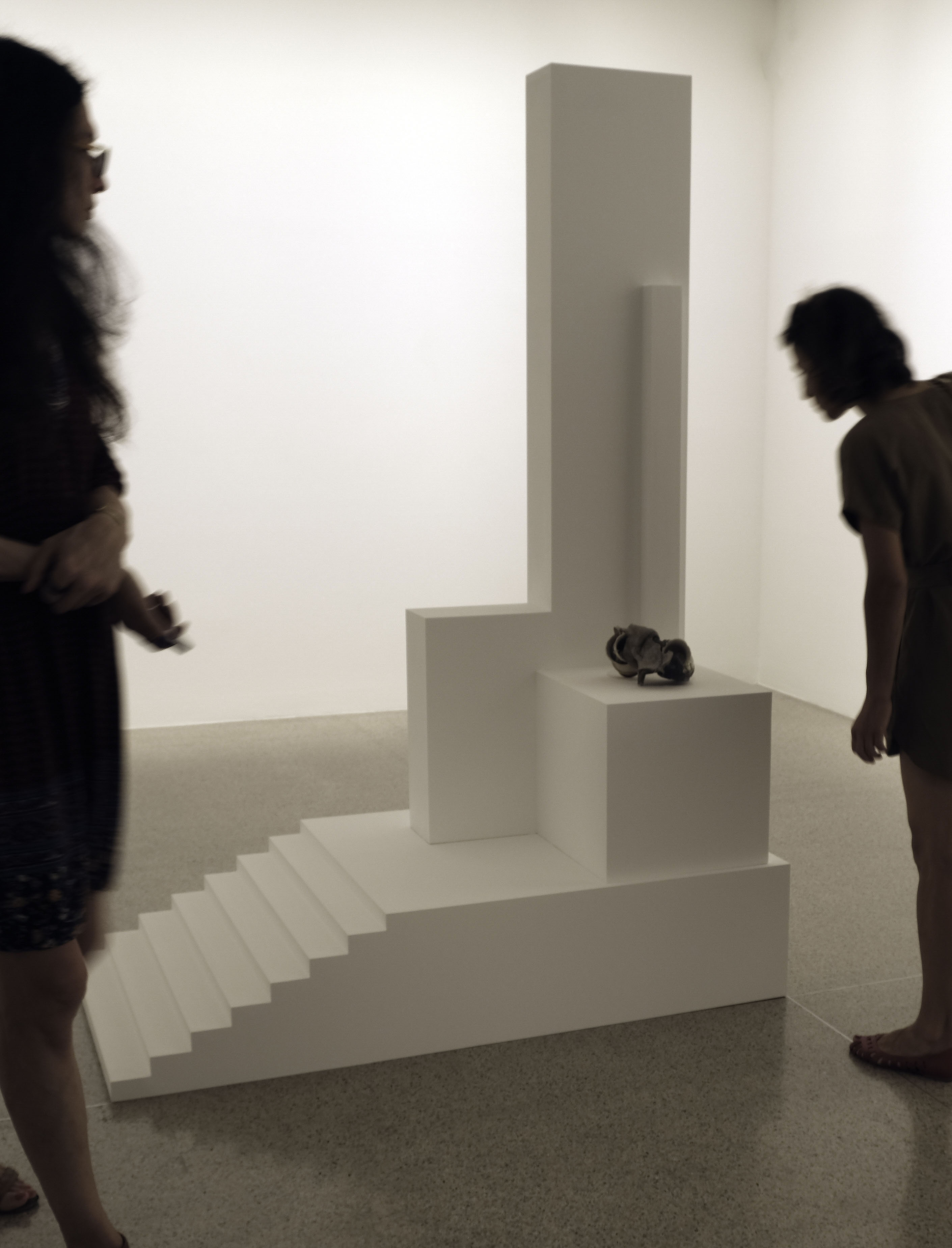
The work of Nikita Kadan (born 1982 in Kiev) centers on his artistic exploration of post-communist social and political developments, and their origins and causes in the Soviet system. Kadan produces drawings, paintings, and photography as well as objects, sculptures, and installations. The artist is a sensitive and critical observer and interpreter of historical shifts, and also of the connections and continuities between the communist past and turbo-capitalist present. He is a member of the artists’ group R.E.P. (Revolutionary Experimental Space) and co-founder of the activists’ group Hudrada. As an activist in the field of art and politics, Kadan also works with architects, sociologists, and human rights activists.
In his exhibition, the artist addresses the visibility and function of the artistic avant-garde in Ukraine within contemporary neoliberalism, which—in the conflict with Russia—is shaped by a politics based on military goals and an ideology of anti-solidarity in the fabric of society.
Curated by Rainer Fuchs
2017 Sam Steverlynck about ‘The High Disease’ in H ART, 15 dec 2017
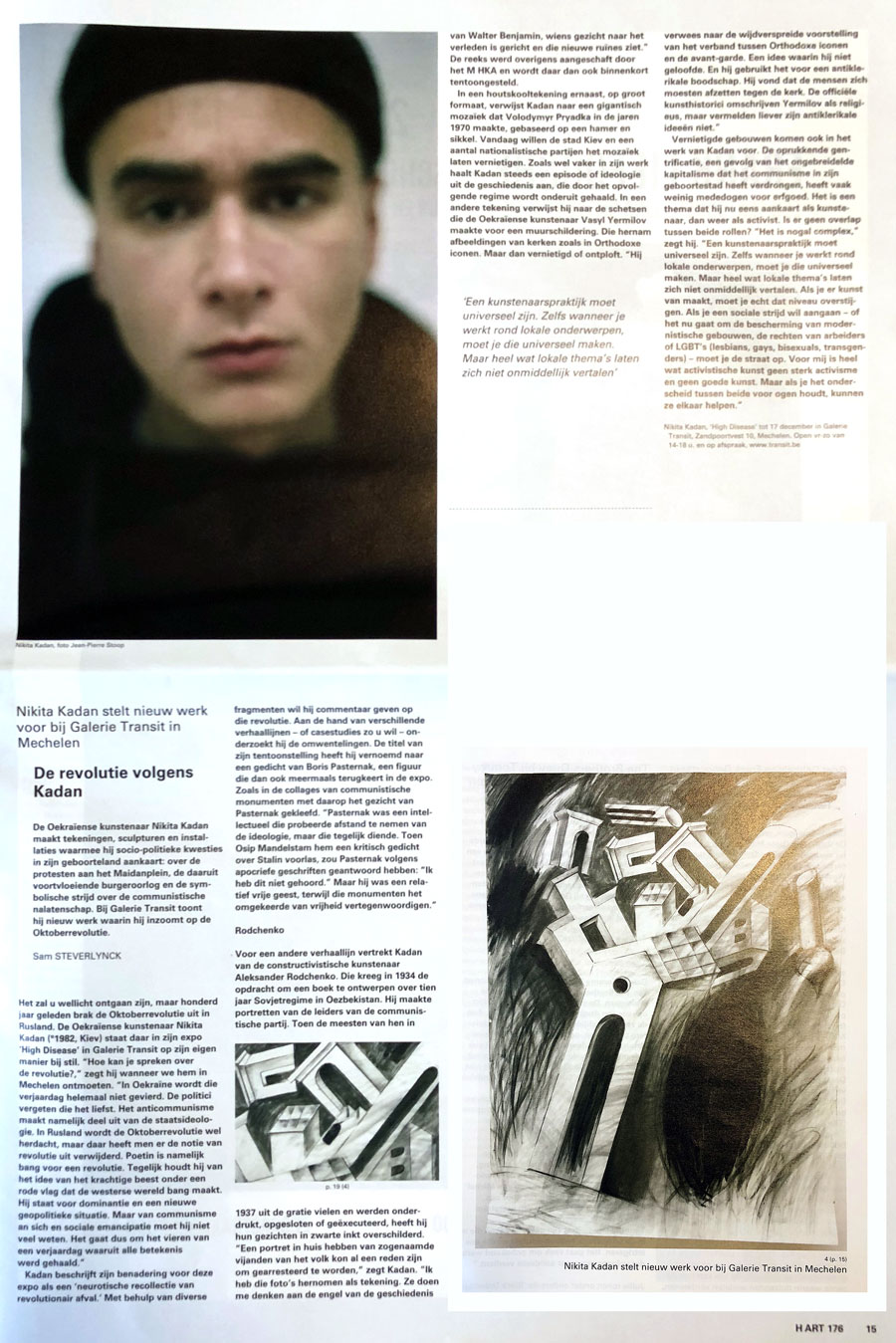
2015 Venice Biennial: Difficulties of Profanation
A traditional showcase, in its form and material referring to showcases from the Soviet Union, accumulates materials that Nikita Kadan has collected in eastern Ukraine during the war. The rubble inside reveals political narratives with a striking truthfulness: these destroyed artefacts are containers of words, of images and memories that narrate a (present) history. Thus the sculpture deals with the institutionalization of memories, the role of local heritage in forming a historical understanding against the cultural amnesia resulting from the conflicts. The showcase itself, in opposition to the rubble it collects, addresses Ukraine’s Soviet past, a part of history that is rather readily forgotten. It places the current conflict in a historical framework and presents the war as an extension of an established conflict of ideologies.
In between the rubble, inside the showcase, grows a bean plant that over time will cover the destroyed artefacts. It transforms the sculpture into a greenhouse, referring to popular gardens that appeared throughout the conflict, starting on the occupation of Maidan Square and continuing to the warzone in Dombass. These gardens suggest hope, a new start, a future life and process of reconciliation.
“The allegorical character of Hope is traditionally called upon by shipwreck victims, those who are completely at the mercy of external forces. It is easy to make profound generalizations about it for those who are safe on the shore. And it is impossible to describe his situation to the one who is being played by the waves. The experience of a pure, all-encompassing hope, which has replaced everything else, must remain untold. It often appears as an aid, an excuse for leaving loopholes, for thoughtlessness and for not pursuing a matter. We should talk about hope only if we need to exhaust it, to step over it as if it was a threshold, to be on the other side of it. Only then we can calmly walk on the burning ground, smiling and taking full responsibility for our choices.”
Nikita Kadan
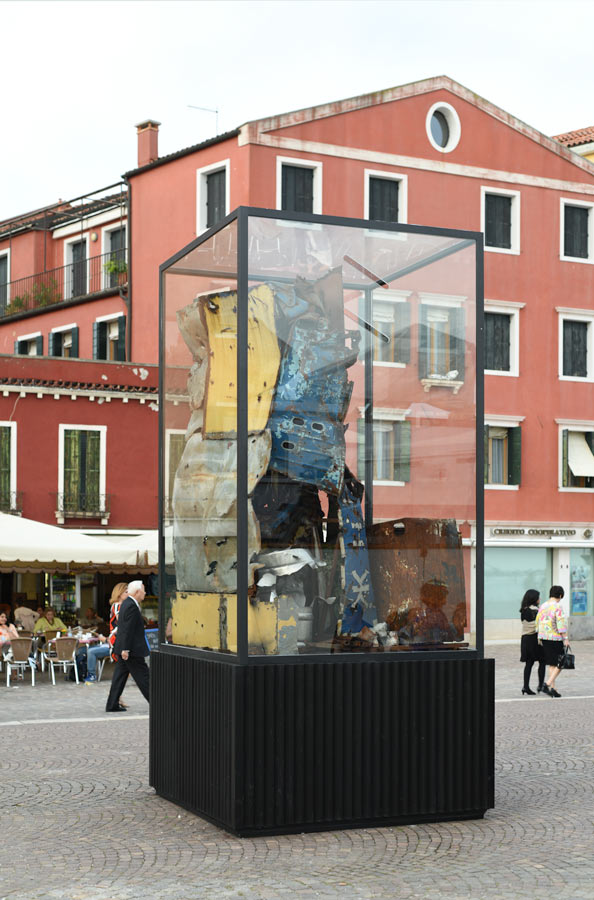
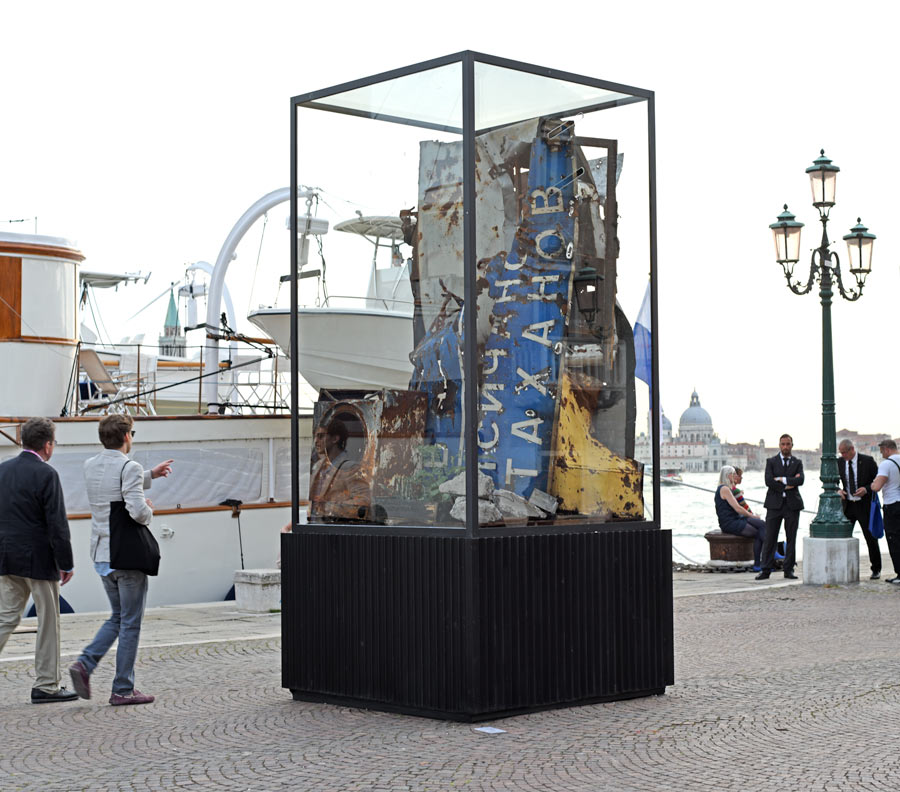
Article in New-York Times, click here to download the pdf
2014 Sungrids
“The incandescent rays of light in Private Suns by Nikita Kadan reflects an aura of freedom – which is increasingly being reduced in public space – from a private space. The visitors remain outside the utopian horizons created by the shining image of the neon suns of a post-socialist metal grid, where others (artists?) have sought to find a new dimension. The grid is only effective as a formal and ideological tool when it is not perceived as an escapist structure.”
Interview with Björn Geldhof, Pinchuk Art Center: http://pinchukartcentre.org/en/interviews/kadan
2013 FLACC werkplaats voor beeldende kunstenaars | workplace for visual artists
Nikita Kadan (°1982, KYIV) lives in Kyiv. He graduated in 2007 from the National Academy of Fine Art (Kyiv) where he studied on the department of monumental painting under professor Mykola Storozhenko. Since 2004 Nikita Kadan is a member of R.E.P. (Revolutionary experimental space) artists group.
He is co-founder (2008) and a member of HUDRADA (Artistic committee) curatorial and activist group. Kadan works with installation, graphics, painting, mural drawings, posters in the city, often in (interdisciplinary) collaboration – with architects, human rights watch activists and sociologysts.
Kadan often uses the style typical for drawings taken from Soviet medical books. They represent “bodies-objects”, “obedient bodies” from Foucault which can be corrected and improved while their faces always remain calm and quiet, slightly smiling.
The issue of torture is very important for Kadan: starting from the “direct” torture used by the Ukrainian militia (police) to the “hidden torture” such as standing all day long and selling food in the street in winter – elderly women working like this constitute a typical element of the Kiev cityscape. Architecture is another important topic of Kadan’s works in which it is treated as a discipline tool, spatial manifestation of the authority.
The works “Fixing” (2010) and “The Corrupted” (2012) focus on the relations between the body and the city – when certain directions of the city development turn against its inhabitants, their social relations and everyday life, as well as against the body of the individual human being. Fixing is comprised of five lightboxes with images combining medical drawings from the medical encyclopaedia of the 1950s with “supremacist” forms of architectural planning. The city plan turns into an instrument for violent fixing of the citizen’s body. “The Corrupted” constitutes a cycle of watercolour drawings combining architectural elements with human body parts. These architectural-anatomical combinations refer to the Renaissance concept of the anthropomorphic city. The work focuses on the problems of the contemporary post-communist cities in which public space suffers due to aggressive neoliberalism. “The body of the city” is cut to pieces offered for sale.
“Procedure room” (2009-2010) is a set of souvenir plates with imprinted instruction drawings of tortures used by the militia. The selection of forms and visual means is connected with the absence of any clear visual documentation of torture procedures, with their specific “invisibility”.
“Pedestal. Practice of exclusion” installation (2009-2011) consists of o huge model of pedestal and a text on the wall. This white gypsum-cardboard pedestal stands in the exhibition hall touching the ceiling, leaving no place for the monument. The space for the viewer to pass around the pedestal is narrow. White text on pale grey wall is a chronicle of a “war of the monuments” in post-Soviet Ukraine: vandalizing both Soviet and new national-patriotic monuments.
“Small house of giants” (2012) is a combined object, kind of architectural collage, which’s parts are living container for builders from 1970s and a model of facade of geometric form referring to Soviet neo-modernist architecture of the same period. “Small house of giants” is a reflection on the shifting social role of the worker within the new capitalist environment in Ukraine. On the other hand this object opens a critical discourse on the fictive heroical position that workers held in the Soviet past.
